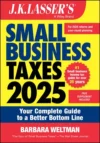Aunt Can Treat Niece, Nephews as Her Dependents
A qualifying child many entitle a taxpayer to a variety of breaks, including head of household status, the earned income credit, the child tax credit, and Economic Impact Payments (EIPs). Before 2018, it also means eligibility for a dependency exemption, which is set to come back into the law after 2025. Typically, parents are the taxpayers claiming a qualifying child, with the attendant tax breaks. However, another relative may be able to get these breaks.
An aunt cared for her niece and two nephews because her brother was disabled. They stayed with their father some days, but with the aunt on other days. The Tax Court allowed her to treat her niece and nephews as her qualifying children (Griffin, TC Summary Opinion 2021-26).
There are a number of conditions for being a “qualifying child.” Two of these are relationship and residency. The aunt met both tests. The children were related to her because they were descendants of her brother. And she met the residency test because her credible testimony showed they lived with her for more than half the year.
Note: While her return was being audited, her brother signed Form 8332 waiving his right to claim his children as dependents. The court didn’t pay much attention to the form, focusing instead on the factors described above.
Amount realized
A statutory term used to figure your profit or loss on a sale or exchange. Generally, it is sales proceeds plus mortgages assumed or taken subject to, less transaction expenses, such as commissions and legal costs.



